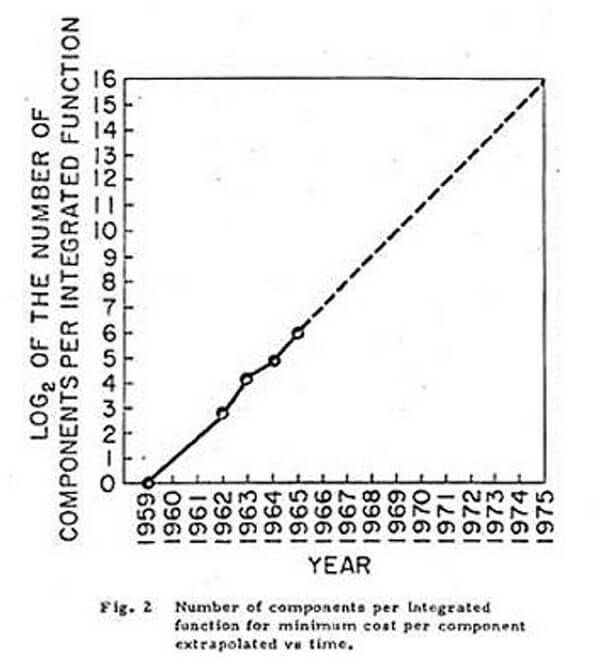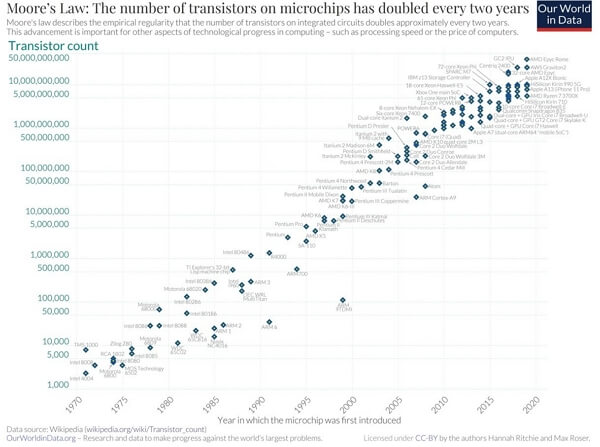Remembering the Legacy of Gordon Moore
Authored by: Jeff Brown via Bleeding Edge
In April of 1965, a thirty-six-year-old scientist made a prediction about the future of semiconductors. His paper “Cramming More Components onto Integrated Circuits” was written in the early days of the semiconductor industry.
He predicted the industry's evolution encapsulated by a rudimentary logarithmic graph below.

What stands out so sharply in the image above is that the projection was based on just a handful of real-world data points. Said another way, the future was predicted on a minimal amount of information.
And yet, this simple chart became a legend. As it was later known, Moore's Law became a guiding principle for the semiconductor industry.
In his original prediction, Gordon Moore suggested that the number of components in an integrated circuit would double yearly. By 1975, after collecting a decade more data points, he revised that the doubling would occur every two years.
And that’s precisely what happened.

Almost sixty years have passed since Moore’s original prediction, and it’s remarkable how accurate this industry “law” has proven to be.
And while there were some technological underpinnings that Gordon Moore used to create Moore’s Law, it was never a physical law. It was logical and well thought out, but no physical properties would have dictated the decades of consistently paced advancement shown above.
Moore’s Law became a competitive battle cry for the industry. A gauntlet was thrown to the ground during the industry to keep a torrid pace that would ultimately lead to unbelievable computing and consumer electronics breakthroughs.
And in the last year, the incessant nature of Moore’s Law has led to an outrageous inflection point in artificial intelligence technology. Without these radical improvements in semiconductor technology, there wouldn’t be the computational horsepower to run the mind-blowing software behind the most recent developments in generative artificial intelligence.
The world lost this legend on Friday at the age of 94. What a remarkable career he had, and his exceptional contributions to the world through his inventions and collaboration in the semiconductor industry.
It is a fitting moment in time.
Moore’s Law will forever live on and will be enshrined in the fabric of the semiconductor industry and history itself. But we’ve hit an inflection point that even Moore didn’t initially envision.
What’s happening right now isn’t raw computational power or the next doubling of transistors on an integrated circuit. What’s happening right now is that computers are starting to “think” and to “reason” to “predict.” Computers are beginning to have abilities far more similar to the human brain than a complex integrated circuit.
And that means that technological advancement and “doublings” will happen now in months, not years. It’s a pace that will make the most nimble, knowledgeable, and open-minded of us feel uncomfortable with the speed of development.
It’s a pace that will ultimately require a new framework for how we view and measure technological advancement.
Moore set the competitive pace for the industry for the last six decades. And now, it turns out; the industry is ready to move even faster.
Rest in peace, Gordon Moore.
This article was printed from TradingSig.com